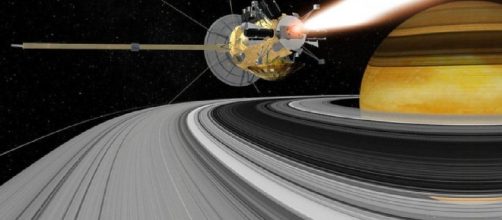The National Aeronautics and Space Administration (NASA) has recently unveiled a plan for the Cassini spacecraft’s crash into Saturn on April 26th. The plunge is the first of a series of dives the spacecraft will make through the 1,500-mile-wide gap between Saturn and its rings. The Space Agency has made a simulation video available so that we can watch the thrilling final chapter for the 20-year-old mission.
Cassini’s contribution
Cassini has made numerous accomplishments during its 13 years orbiting the planet Saturn. Through Cassini, scientists discovered that Saturn had seven more hidden moons, including Methone, Pallene, Poludeuceus, Daphnis, Anthe, Aegaeon that the 984-foot wide S/2009 S1 discovered in 2009.
The exploration mission uncovered that Saturn’s moon Enceladus contained geysers that produce liquid water. In 2006, Cassini captured images of what appeared to be a hurricane, something our scientists have never observed outside of Earth before. At that time, “the hexagon” was a hurricane 50 times the size of an average hurricane we know.
The ‘Grand Finale’
As Cassini flies close to Saturn’s giant moon Titan, its orbit will shrink. The spacecraft will then begin passing between the planet and the inner edge of its rings. By mid-September, Cassini will have made its plunge into Saturn’s atmosphere. It will continue to send data from several of its instruments until we lose its signal, formally ending the Cassini-Huygens mission, which is a cooperation between NASA, the European Space Agency (ESA), and Italian Space Agency.
The spacecraft has made 22 orbits between Saturn and its rings.
Remaining observations
For the final mission, planned to complete on September 15, Cassini will make some of its most extraordinary observations into the planet’s internal structure and the origin of the rings, trying to obtain a first-ever sample of the planet’s atmosphere, and particles from the main rings. Cassini will also capture the closest views of Saturn’s clouds and inner rings. On April 22, it will fly near Titan.
Linda Spilker, Cassini project scientist at NASA’s Jet Propulsion Laboratory (JPL) in Pasadena, said that the Grand Finale is so much more than a final plunge. “It is a thrilling final chapter for our intrepid spacecraft,” she said of NASA’s plan.

